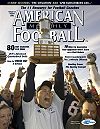AMERICAN FOOTBALL MONTHLY THE #1 RESOURCE FOR FOOTBALL COACHES
Article CategoriesAFM Magazine
|
The Scouting Reportby: AFM Editorial Staff© More from this issue At the entrance to the Katy High School (TX) athletics field house, there’s a high trophy case with the inscription, “When excellence becomes a tradition, greatness has no limits.” The Katy Tigers have developed both a tradition and greatness. Named as the ‘High School Team of the Decade’ by the Houston Chronicle, Katy won Texas State Class 5A football championships in 1997, 2000, and 2003. The Tigers had an overall 107-25 mark in the 90’s under Mike Johnston and an outstanding staff. Having been at Katy High School for more than 20 years as an assistant coach, Gary Joseph succeeded Johnston in 2004. The 2003 team won their third Class 5A Texas State Championship and in Joseph's first season, Katy finished 12-....The full article can only be seen by subscribers. Subscribe today!
|
|
|||||||
| HOME |
MAGAZINE |
SUBSCRIBE | ONLINE COLUMNISTS | COACHING VIDEOS |
Copyright 2025, AmericanFootballMonthly.com
All Rights Reserved





